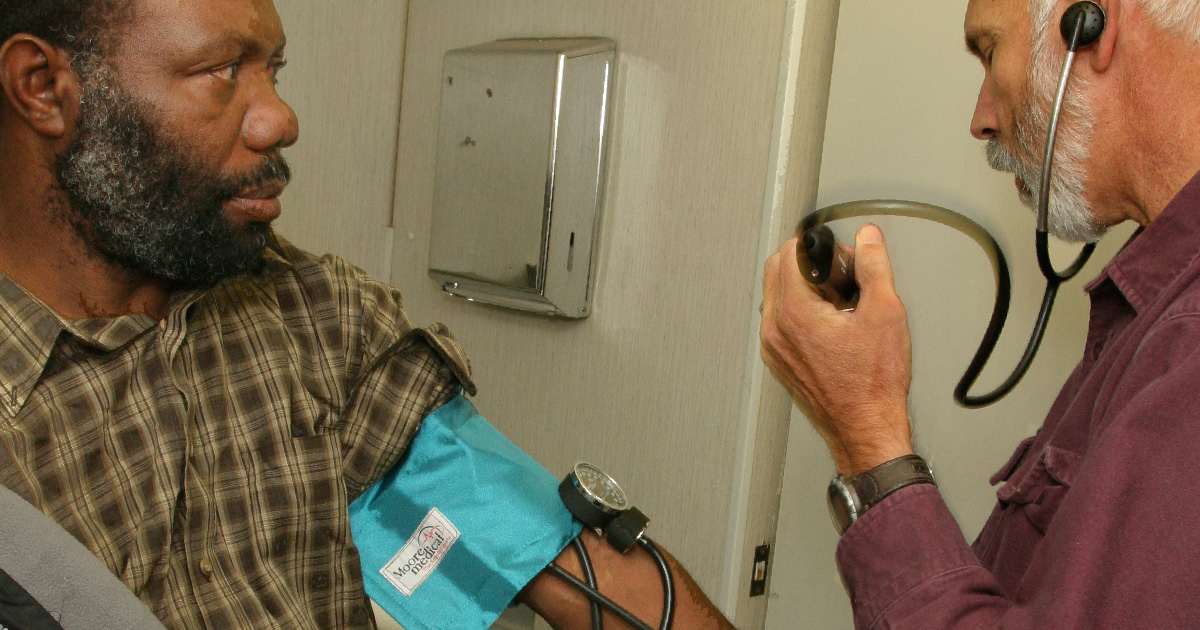- Who We Are
- Clinician Employment
- Publications
- Witness to Witness (W2W)
- Kugel & Zuroweste Health Justice Award
- Your Voice Matters: Photovoice Project

Migrant workers across the US may be at a higher risk for high blood pressure. A majority of US migrants are Latino. While data specific to migrants are lacking, the Latino population as a whole has an increased risk. While Latinos are just as likely as whites to have high blood pressure, Latinos have 24 percent more poorly controlled high blood pressure compared to whites.1 Several factors may increase a migrant worker’s risk of high blood pressure:
- Cultural and Linguistic Differences: Health care practices, beliefs, and dietary norms may differ, both from the general US population and among different cultures and subgroups.
- Medical Knowledge and Awareness: Latinos have a similar incidence of high blood pressure, but, in addition to lower levels of treatment and control, Latinos also had lower levels of awareness compared to non-Hispanic whites. Among Latinos, the lowest levels of awareness, treatment, and control were among those without health insurance.2 Similarly, migrant workers as a while may have lower levels of awareness and treatment options due to lack of access to health services.
- Social Determinants: Poverty, unreliable transportation, lack of insurance and prescription coverage, inability to buy services and supplies or to modify diets, and substandard housing that may lack refrigeration, privacy, or adequate bath facilities are some of the determinants that contribute to an unhealthy environment that may compromise well-being.
- Mobility: Mobility itself causes discontinuity of care and leaves patients in unfamiliar health care systems.
- Gender: Men have higher rates of hypertension-related mortality than women.3
- Work Environments:
- Many workplaces do not include benefits, supports, and protections, such as disability coverage or worker's compensation.
- Excessive and prolonged exposure to heat, lack of time for rest, and inability to stay hydrated affect health.
- Many workplaces do not include benefits, supports, and protections, such as disability coverage or worker's compensation.
Each patient may fall into one or more category of increased risk factors -- or none. Migrant diversity is high, even among Latinos. Indigenous groups in Mexico may have different cultural beliefs, diets, and languages than non-indegenous communities from the same region. Smoking is a risk factor for high blood pressure; Puerto Ricans smoke 66 percent more than Mexicans. An urban Latino population may walk less on a daily basis than a rural one, and incur a higher risk of acquiring hypertension due to lack of exercise. For any patient suffering from hypertension who intends to move, continuity of care is essential. MCN’s Health Network provides personal case management of chronic conditions like hypertension. including by can Health Network Associates contact patients, help them find an appointment in their next location, transfer medical records, and more. To learn more about Health Network or to schedule a training for your clinic on how to use Health Network, contact Theressa Lyons-Clampitt, MCN’s Senior Program Manager and Training and Technical Assistance Coordinator, at tlyons@migrantclinician.org.
1Vital Signs: Hispanic Health. Centers for Disease Control and Prevention. Accessed 12 August 2019. Available at: https://www.cdc.gov/vitalsigns/hispanic-health/index.html
2Sorlie PD, Allison MA, Avilés-santa ML, et al. Prevalence of hypertension, awareness, treatment, and control in the Hispanic Community Health Study/Study of Latinos. Am J Hypertens. 2014;27(6):793-800. Available at: https://academic.oup.com/ajh/article/27/6/793/2743304
3Hypertension-related mortality among Hispanic subpopulations--United States, 1995-2002. MMWR Morb Mortal Wkly Rep. 2006;55(7):177-80. Available at: https://www.cdc.gov/mmwr/preview/mmwrhtml/mm5507a3.htm




